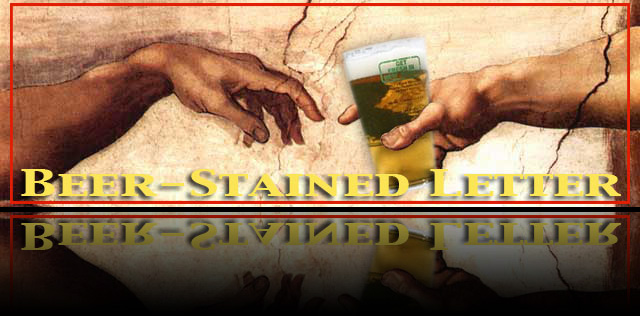Word to the weiss
 Some notes from Atlantic City and the Tun Tavern …
Some notes from Atlantic City and the Tun Tavern …
Look for the Tun to rotate its Summer Weiss into the line-up sometime in June.
This is an annual brew from the gambling mecca’s only brewpub, located at the foot of the Atlantic City Expressway, across the street from the city’s busy convention center.
Brewmaster Tedd Briggs says the beer will continue in the German style of hefeweizen, but will eschew the traditional clovey or fruity hallmarks of the style. The brew will be “well balanced,” Tedd says, charting at about 4.5% ABV.
It will also be a brew that takes well to some apricot or raspberry flavoring, an addition that helped it attract a wider following when the Tun poured the Summer Weiss at last year’s Garden State Craft Brewers Festival along the Camden waterfront.
Tedd plans to return to the decks of the USS New Jersey this year (June 23rd) with the wheat beer, and maybe some brewer’s reserve surprises up his sleeve for the 11th incarnation of the festival. (Stay tuned.)
The Tun’s weiss is expected to run the duration of the summer. But Tedd is also looking at turning in a Belgian wheat to take up a tap handle along side the Tun’s mainstays of Sterling ESB, All American IPA, Leatherneck Stout and Irish Red. About the Tun
About the Tun
Military historians will recognize the name “Tun Tavern” as the birthplace of the U.S. Marine Corps. The 18th century Philadelphia watering hole was where troops were marshaled to suppress uprisings by indigenous tribes, and most famously where two battalions of Continental Marines were recruited in November 1775 as the American Revolution was taking shape.
If you want to find the original Tun Tavern, drive along Interstate 95 through Philadelphia and somewhere along the way look down because the location is multilane pavement now. There is a replica at the Marine Corps’ museum at the corps’ base in Quantico, Va.
And then there’s the Atlantic City brewpub, which salutes the corps with a Semper Fi and some iconic tributes throughout the bar and open-kitchen style restaurant.
You’ll find no less than seven beers on tap created with the Tun’s 10-barrel brewing system, as well as Bud and Coors Light on tap and Corona in the bottle to satisfy the more mainstream beer tastes. (Unlike a lot of brewpubs, which chiefly draw their base clientele from their surrounding areas, the Tun pours beer in a gambling resort that attracts millions of people annually. Translation: The brewpub has to serve a wide range of palates.)
Top-selling beer -- Tun Light (4.7% ABV); fan favorite -- All American IPA (6.5% ABV), a hoppy and assertive but not overwhelming session take on the India pale ale style.














